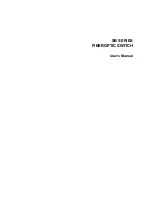
User Manual: Switch-Control 63400
Page 2
3. Function
When a button connected to the Switch-Control is activated, a command will be sent out. This command
might switch a turnout or signal or access an entire route, which is stored in an Intellibox, Fleischmann
TwinCenter, or IB-Switch. The Switch-Control can also send out a command when two buttons are
activated in succession. Consequently, a TDCB can be built which uses “Start & End” buttons, for
example.
The Switch-Control monitors all switch commands of the digital system and can switch a connected
indicator lamp On or Off, when a matching command is sent. The lamp can be influenced through the
switching commands of accessories or through digital feedback. This gives the possibility of using the
connected lamps for the display of turnout positions, track occupancy information, or entire routes. The
connected buttons and lamps are assigned a function using the LocoNet Program menu of the Intellibox
(version 1.3 and up), even in normal layout operation.
3.1 Single Keys and “Start & End” Key Combinations
The Switch-Control can generate the following commands through a keypress:
1.
A matching magnetic accessory to position “red”
2.
A matching magnetic accessory to position “green”
3.
A feedback “free” generated with a matching feedback address
4.
A feedback “occupied” generated with a matching feedback address
5.
A matching magnetic accessory to return to its previous position (one key “toggle” operation)
The commands 1 to 5 can be generated through the activation of a single key, for the switching of turnouts
and signals or the execution of entire routes.
Often on TDCBs however, Start & End keys are used for activating entire routes. A Start&End key
combination is selected by first pressing and holding the Start key and then closed by activating the End
key. With either key pressed individually, a properly programmed Switch-Control can also issue the
commands 1 to 4 of the list above.
3.2 Lamp Functions
The Switch-Control can switch a lamp output On or Off through the following commands of the digital
system:
1.
A matching magnetic accessory to position “red”
2.
A matching magnetic accessory to position “green”
3.
A matching feedback module reports “free”
4.
A matching feedback module reports “occupied”
5.
A matching key or key combination of the Switch-Control is activated
3.3 Factory Default Settings
The keys of inputs 1 and 2 switch the magnetic accessory with address 1. Key 1 switches the accessory to
position “red” or “curved.” Key 2 switches the accessory to position “green” or “straight.” The lamps on
outputs 1 and 2 show the position of the accessory, output 1 for position “red” and output 2 for position
“green.” The remaining key inputs and lamp outputs are sequentially reserved to addresses 2 to 5:
Inputs / Outputs
Accessory Address
1 & 2
1
3 & 4
2
5 & 6
3
7 & 8
4
9 & 10
5































